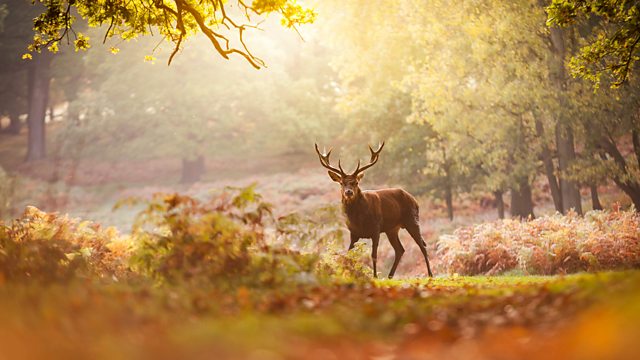Autumnwatch 2022 episode 2: A deep dive into the changing nature of autumn, looking at the winners and losers as environmental patterns shift. In Norfolk, Chris Packham and Michaela Strachan showcase the surprising things that viewers have been seeing this autumn from around the country.
Iolo Williams and Gillian Burke wow in Wales with marine marvels and mammals, including live bats departing en masse from their roost sites at dusk.
Springwatch, Autumnwatch and Winterwatch, sometimes known collectively as The Watches, are annual BBC television series which chart the fortunes of British wildlife during the changing of the seasons in the United Kingdom. The programmes are broadcast live from locations around the country in a primetime evening slot on BBC Two. They require a crew of 100 and over 50 cameras, making them the BBC’s largest British outside broadcast events. Many of the cameras are hidden and operated remotely to record natural behaviour, for example, of birds in their nests and badgers outside their sett.
Springwatch begins on the Spring Bank Holiday and is broadcast four nights each week for three weeks. After the success of the first Springwatch in 2005, the BBC commissioned a one-off special, Autumnwatch, which became a full series in 2006. Winterwatch began in 2012, broadcast in January or February.
Autumnwatch 2022 episode 2
Welsh Wildlife Centre
The Welsh Wildlife Centre is a wildlife reserve covering Teifi Marshes, near Cilgerran on the Pembrokeshire/Ceredigion border, Wales. The site is located close to the Cardigan-Cilgerran Offshoot of the Pembrokeshire Coastal Path. The reserve was established in 1993, located a mile from Cardigan. The site won an award for its design upon opening. The main building is a wood and glass structure with a panoramic view across Cardigan and the River Teifi.
The site is owned and managed by Wildlife Trust of South & West Wales. The reserve covers 264 acres (107 ha) of the Teifi Marshes Nature Reserve. It has been described as “one of the best wetland reserves in Wales” by the BBC, and is one of only a few sites in the UK where one can find resident water buffalo.
In September 2019 arsonists burnt down a Kingfisher Hide at a cost of £20,000 to the Wildlife Trust. On New Year’s Day that year, the site was again attacked by vandals, who damaged a badger sculpture. The site currently welcomes over 80,000 visitors per year. The reserve includes a wide variety of habitats which include, pasture and wooded hedgerows, freshwater marsh, reedbeds, and tidal mud banks.
The reserve is home to a large number of birds. These have included sedge warblers, reed warblers, cetti’s warblers, kingfishers, marsh harriers, and red kites. Also present are water voles, sika deer, otter, and a range of insects in the summer months including 17 different species of dragonfly.
Wild Ken Hill
Wild Ken Hill is a rewilding and regenerative agriculture project located in Norfolk, England, at the edge of The Wash. The name Ken Hill probably derives from a chieftain or landowner with the Anglo-Saxon name Cena. The site has been inhabited from ancient times, with hoards including gold torcs, ingot rings, coins, bracelets and scrap metal from the last two centuries BC being found by archaeologists at Ken Hill.
Wild Ken Hill is a lowland farm with some grassland, meadow, heathland and shrub. In the middle of the farm, arable farming and intensive grazing have been replaced with low density herbivores (Red Poll cattle, Tamworth pigs, Exmoor ponies). Woodland thinning encourages wood pasture. European beavers have been reintroduced within an enclosure.
The farm also manages freshwater marsh, river valleys and woodland in a traditional manner in the west of the farm. The eastern part of the farm is used for regenerative agriculture, where “we aim to repair soil health to sequester carbon and boost biodiversity, whilst also delivering good, sustainable yields with minimal use of chemical inputs.




